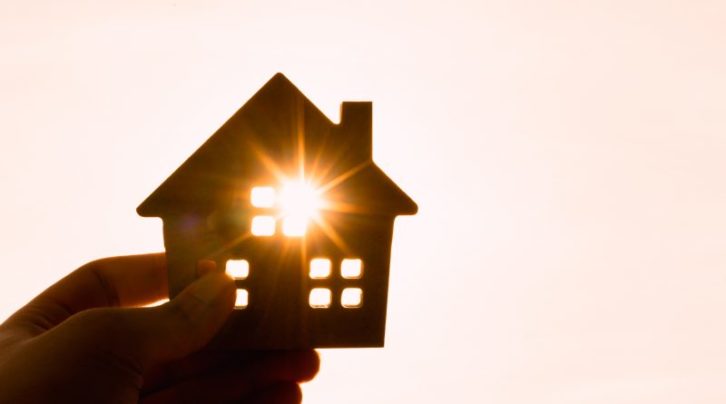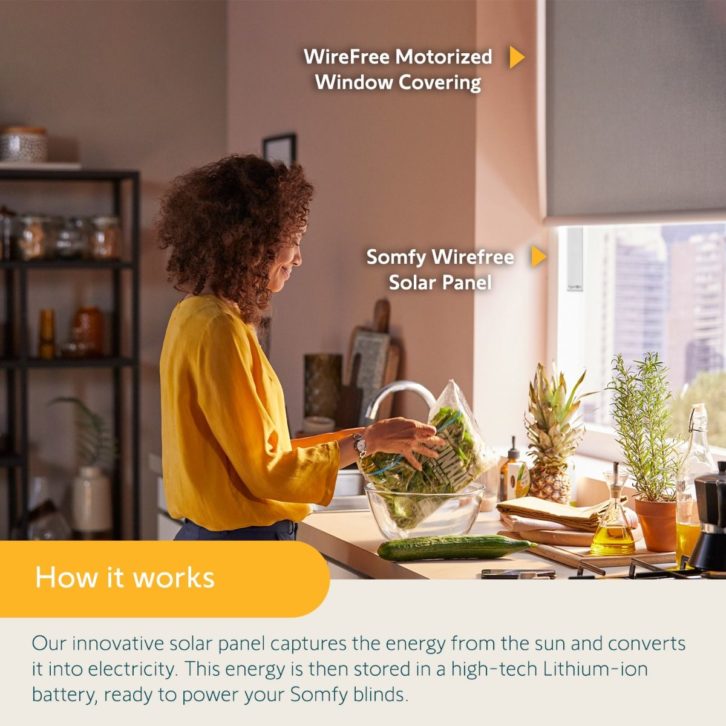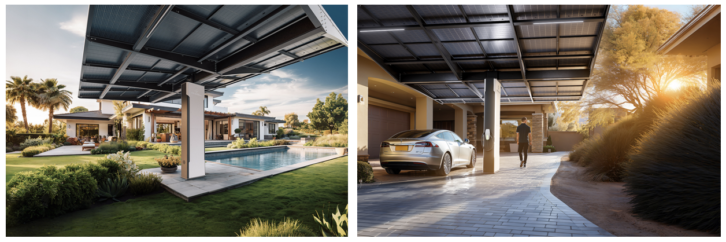
The green technology movement has been gaining momentum for a long time. Making money while saving the planet is a big win for everyone. Of course, solar energy is at the forefront of this movement.
When most people hear the term "solar power", they think of large dark solar panels mounted on the roofs of houses. But now it is more than that. Solar energy is used in everything from security cameras to virtually self-operating blinds. The world of solar energy is developing in the most interesting way.
This article will examine the benefits of solar powered equipment and discuss the state of the industry. We will also look at the challenges that solar equipment poses and how to integrate it into your home.
Why solar power?
Let's first discuss the benefits of using solar energy in our home appliances because we have other sources of energy available.
First, using solar energy to power smart home devices reduces our dependence on traditional electricity. For the average consumer, this means lower electricity bills.
Using less electricity from the grid also reduces dependence on the electric service. When the power goes out, solar-powered devices can often continue to operate. Scientists predict an increase in weather events and extreme temperatures in the coming decades. This will inevitably lead to more power outages and therefore more consumers interested in having more products that reduce their dependence on public electricity.
Solar-powered equipment also requires less maintenance than conventional equipment, meaning consumers can reduce costs and power in the long term.
Finally, the use of solar energy contributes to the growth of the renewable energy sector. This contributes to economic growth and at the same time helps to reduce the impact of climate change.
Solar home appliances market

The solar powered smart home gadget market is growing at an impressive rate. This led to the creation of a wide variety of products that are now available to homeowners.
The most common solar-powered devices include:
- Security system
- Outdoor lighting
- Smart curtain
- Lawn and garden equipment
- thermostat
- Smart speakers
There is no doubt that the rise of solar-powered smart home devices is now a clear trend and not just a passing phase. The reason this is such a big part of the future of the industry is because of the huge push from companies (tech giants and startups) and consumers to expand the use of solar technology.
This interest is directly related to the need to reduce our dependence on the grid and the need for consumers to reduce their carbon footprint, as well as the desire of companies to take advantage of government incentives for renewable energy. Energy efficiency is the main selling point. Such a large and strong trend will undoubtedly lead to an increase in market demand for solar powered home appliances in the future.
How did we get here?
 Solar cell technology has shaken up the world of renewable energy in a big way. Perhaps the greatest advance in this field was the advent of perovskite solar cells.
Solar cell technology has shaken up the world of renewable energy in a big way. Perhaps the greatest advance in this field was the advent of perovskite solar cells.
These elements are quite new and have not yet reached their lifetime potential (and therefore can be applied commercially on a large scale), but currently achieve efficiency levels of around 30%. With average solar cell efficiencies currently ranging between 15 and 22%, this new level of efficiency will define the industry for years to come.
The invention of the quantum dot solar cell also represents a major change in the industry. This makes it possible to achieve excellent light absorption and improve the properties of the semiconductor. This, combined with the development of solar power concentrators that increase the amount of sunlight received, will further increase the efficiency of solar panels.
Researchers are also studying organic photovoltaic cells. The use of organic photovoltaic cells ensures the transparency and flexibility of the device. Designed for everything from building materials to wearables.
Challenges in the solar energy sector

The first and most obvious problem is the price of this device, as the initial cost can be a bit high. At the same time, the market for these devices is still quite new and, as is often the case, market maturity inevitably leads to a gradual decline in prices. This is likely to happen faster with increasing government incentives for the development of green technology.
In addition, there are environmental concerns related to the lifetime of solar cells and their devices, and the disposal or recycling of waste materials. This can pose a problem for eco-conscious consumers, as purchasing solar-powered equipment should be a solution to less environmentally friendly choices. Another drawback could be your location. Sun addiction can become a problem if you don't have enough access to this resource. This can be especially problematic for larger solar-powered devices such as rooftop solar panels.
One solution is to hire a roofer who can determine the best panel placement and maximize the roof area. If you are planning to hire a roofing contractor, make sure you use roofing contractor software that has features like instant payments and messaging to make things easier.
How to integrate solar powered appliances into your home
You may be ready to turn your home into a solar power center, but where to start? Here are some quick tips and tricks to help you prepare.
Start small . If you're new to solar, it's easy to go all in and get confused. Your best bet is to start with something simple, like a street light or solar charger, before moving on to more complex devices.
Find the sun. Find out where the sun shines the most in your home, because it will not hit the same spot everywhere. Maybe you have a balcony that gets a lot of sun. This would make a great place for a solar camera. Or maybe you have a windowsill that gets a lot of sun. This could be a great place for a solar charger.
Energy storage is important . Since sunlight is not available everywhere, many solar-powered devices have rechargeable batteries. Battery powered devices can operate indefinitely and continuously.
Integration with other smart devices . If you're interested in solar-powered home devices, you probably already have other smart devices in your home. For added convenience, make sure everything you want to buy works with the same interface.
Do not forget the service . Solar panels generally require little maintenance, which is a big part of their appeal. However, remember to clean dust and dirt regularly for optimal performance.
Closure
The future of home technology is not only smart, it's also sustainable. We live in an extraordinary time when we can use technology that harnesses solar energy, our most valuable source of renewable energy. Every time you switch to solar power, you make a statement. This statement means that you not only appreciate great technology, but you also care about being part of the solution to the planet's problems.
Although this new technology may be a bit expensive, the market will eventually lower the price and remove most of the barriers to its use. In the meantime, start small, work your way up, and don't forget to buy a battery-powered device so you can keep using it. Pair it with smart home devices and keep it well maintained so it lasts for years.
See also: Topics of conversation. Active and passive speakers. What is the difference, which one is the best?



